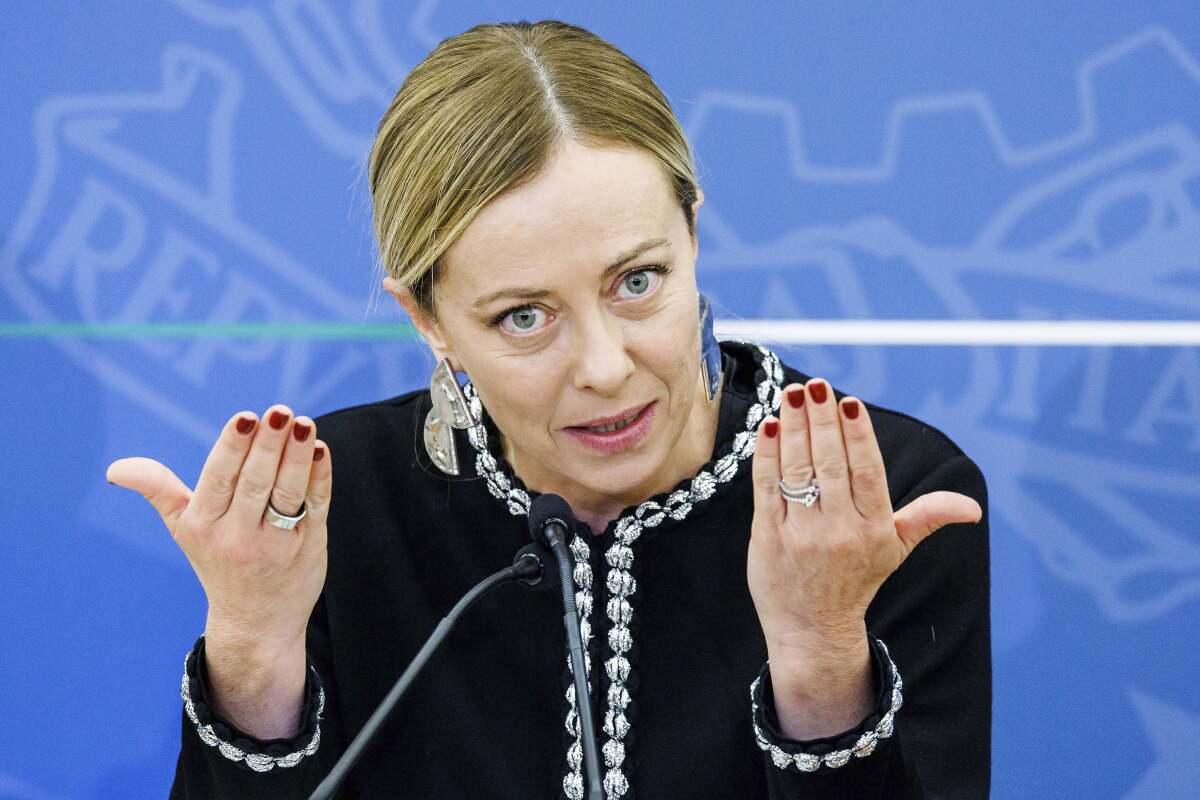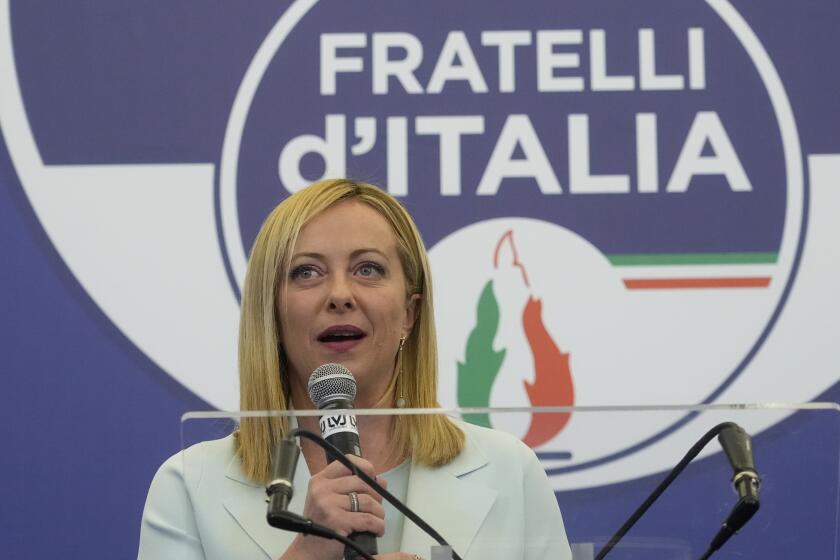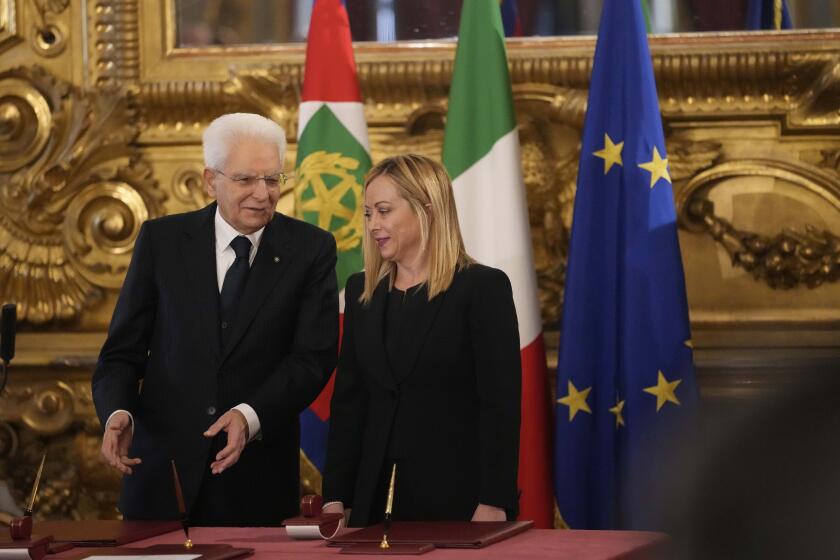Meloni pushes change to let voters directly elect Italy’s prime minister

- Share via
ROME — Italian Premier Giorgia Meloni’s Cabinet on Friday approved her proposal to make the office of the prime minister directly elected by voters in a bid to end the country’s chronic ailment of short-lived, unstable governments.
Changing Italy’s Constitution would allow voters to elect a premier who would serve five years — to coincide with Parliament’s full term.
The far-right leader insisted at a news conference that what she called the “mother of all reforms” will guarantee more stability in a nation where government coalitions sometimes last only months or even weeks.
But there’s no guarantee the reform will become reality.
It’s likely that voters would have the final say. A referendum would take place if two-thirds of lawmakers fail to approve the reform.
Giorgia Meloni, Italy’s first female leader, has toned down some of her divisive rhetoric, but her government continues to pursue far-right policies.
Although Meloni’s government, with the help of its right-wing coalition partners, commands a comfortable parliamentary majority, it would need opposition forces to reach the two-thirds threshold. Italy’s major left-leaning and populist parties don’t back her proposal.
Meloni told reporters the reform would make it more likely that Italy’s national leaders could accomplish their goals.
Italy has had nine premiers and 12 governments since 2002, while France had just four and Germany three, Meloni said. Italy’s economy grew just 4% in that period, compared with 20% in France and Germany, she said.
“We have to ask the question: Are all Italian politicians worse than those in France and Germany, which frankly I don’t believe, or is something not working?” Meloni asked rhetorically.
Under the reform, should a premier lose the backing of Parliament, Italy’s president, as head of state, must tap a replacement from the same political fold. Under the current system, the replacement can come from a party outside the elected majority — or even be a nonpolitical figure.
Giorgia Meloni has been sworn into office as Italy’s prime minister, the first woman to hold that office. Her political party has neo-fascist roots.
In 2021, for example, President Sergio Mattarella, with populist Premier Giuseppe Conte’s government struggling, tapped former European Central Bank chief Mario Draghi to lead a coalition cobbled together from political rivals on the left and the right.
Meloni was the only major political figure to refuse to join the Draghi “unity” government.
Deputy Premier Matteo Salvini hailed the provision that would prevent any replacement premier from being picked from outside the party chosen by the voters.
But Salvini himself famously sought to upend the voters’ will when, in 2019, he yanked his League party from Conte’s first government, which had come to power with a resounding victory by the 5-Star Movement.
Salvini’s maneuver to grab the premiership for himself backfired when the 5-Stars allied with the opposition Democratic Party, shutting the League out of government.
A century after Benito Mussolini’s 1922 March on Rome brought the fascist dictator to power, the Brothers of Italy party won the most votes in Italy’s national election Sunday. Experts cite voter disillusionment rather than ideology.
The proposed reform would also guarantee that whoever is elected premier would command at least 55% of parliament’s seats.
Opponents fear it would concentrate too much power in the hands of one person, the premier.
“Today is an ugly day for democracy,’’ said opposition lawmaker Riccardo Magi of the tiny More Europe party. Magi said that under the reform, Parliament would essentially be “called on only to say yes to proposed laws that come from the government.”
Magi called for a “great mobilization in the country to stop this sad, messy drift from our parliamentary democracy.”
The constitution was created after Italian voters, shortly after World War II, rejected the monarchy and opted for a democratic republic.
Proposed constitutional changes have to be put to a referendum if 500,000 voters request it through signature petitions. Such a referendum can be avoided if two-thirds of each of Parliament’s two chambers approve the reform after a second round of voting at least three months after an initial vote by lawmakers.
More to Read
Sign up for Essential California
The most important California stories and recommendations in your inbox every morning.
You may occasionally receive promotional content from the Los Angeles Times.













